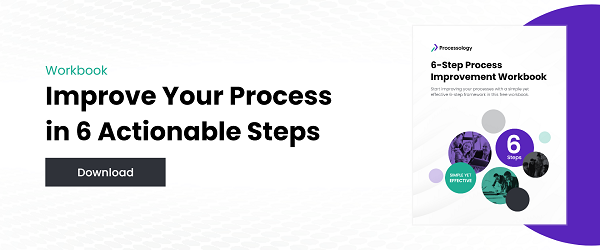Lead nurturing campaigns are your gateway to maximize sales opportunities and increase your brand footprint. Make the best of them with this secret sauce used by successful brands across the globe.
Lead nurturing is a common business process used by sales and marketing teams. The goal of the process is to build long-term relationships with prospects by engaging them through valuable content and product information to increase brand awareness and to move the prospect further down the customer journey.
A good lead nurturing process is critical to building a sustainable business. It helps you stay on top of your prospects' minds whenever they are ready to purchase a product or service that your business offers.
Most marketers focus most of their time, budget, and resources on lead generation, but converting a lead to a paying customer does not happen overnight. Lead Nurturing needs just as much planning, analysis, and creativity to push the leads deeper into the sales cycle.
A successful lead nurturing program promotes:
- More engagement of prospects and leads with your brand (through your website, email, social media, etc)
- Shorter sales cycles
- A community of existing and prospective customers
- A trustworthy relationship of your brand with your existing and prospective customers
In short, lead nurturing leads to more customers, more revenue, and more profits! In fact, Marketo has observed that companies that excel at lead nurturing generate 50% more sales-ready leads at a 33% lower cost.
Now before you jump off to another article, let me come to the point and reveal the best-kept secret of fortune 500 companies that they use to build awesome lead nurturing programs.
And that is - Process maps!
What are Process Maps?
Process maps are a business tool used to understand, simplify, and improve complex business processes. They are used to outline every task, element, system, or employee that is a part of the process.
Process maps help you gain clarity on your business processes. It is a process documentation technique that uses symbols, flowcharts, diagrams, swimlanes, and other mapping elements to simplify the understanding, interpretation, and workflow of a process.
Process Mapping boosts accountability, standardization, and alignment of your processes to business goals.
For more details, check out this guide on business process mapping that covers the importance, limitations, and tools for business process mapping.
I know what you are thinking - yes, process mapping sounds great.
But how do process maps help in lead nurturing?
Think about it. Lead nurturing is a business process. It is a complex business process with multiple swimlanes, levels, silos, elements, and segments.
There are so many tasks involved in a lead nurturing process that function at the same time, such as:
- Addition of new prospect in your database
- Segmenting prospects into meaningful segments
- Sending the right content to the right prospect in every stage (awareness, consideration, decision, purchase, and any other stage you use)
- Scoring your prospects based on their activity
- Deciding which prospect is ready to talk to sales
- And the list goes on
If you are thinking right, you will realize that your lead nurturing campaigns are in desperate need of clarity, alignment, and structuring.
Process maps help you achieve all of this along with so much more.
By building a process map for your lead nurturing campaign, you can:
- visualize your lead nurturing process
- simplify the complexity of your campaign
- build accountability within your sales and marketing teams
- improve the efficiency of your lead segmentation and scoring
- get better analysis to help make faster decisions
- improve conversions by eliminating bottlenecks
Coming to fortune 500 companies, there are many examples of such businesses using largely automated CRMs and other marketing tools to map out their lead nurturing process such as Marketo, Adobe, Oracle, etc.
But if you are just starting with lead nurturing, or want to optimize your existing process, you can map your lead nurturing process using basic diagrams or simpler tools.
To help you begin, we are sharing a few expert tips on using process maps to increase conversions from your lead nurturing process.
3 Tricks to Increase Conversions Using Lead Nurturing Process Maps
The ultimate goal of a lead nurturing process is to increase conversions. Use these 3 simple tips while mapping your lead nurturing process to multiply your conversions:
Close the loop on every possible flow in your map.
Leads are hard-earned marketing assets - they are generated with a lot of teamwork, creative thinking, and most of the time, $$ dollars. This is why losing out on nurturing any lead is a direct waste of time, efforts, and resources.
Considering the global average sales conversion rate of 2.4%, you are losing out on a customer for every 50 leads you are not nurturing properly. And these 50 leads can be from a segment that you forgot to identify in your lead nurturing process map.
Closing the loop on every possible flow is critical in your lead nurturing process map. Rectify every possible scenario in your process, whether it is a landing page visit, an ebook download, or a demo form submission. You need to ensure you are not missing out on any process actions and assigning completion tasks for these actions so that the loop is closed and your lead is engaged.
Validate the map with your team to ensure its entirety.
You will never know every step of your lead nurturing process until you talk to everyone on the team. Your content manager knows what content needs what action, your automation manager understands your process flows better than anyone, and your lead generation team knows more about segmentation than you do.
This is why you must validate your outlined lead nurturing process map with your entire team. Double-check for any misinterpreted flows or elements. Make sure you have the process mapped out correctly, otherwise, you are just looking at the tip of the iceberg.
Keep an open eye for improvement opportunities.
Process maps are the easiest way to look for opportunities to improve your process. Since you can visualize your lead nurturing process, it is easy for you and your team to spot alternatives.
After all, marketing is all about testing. You A/B test your content, design, forms, layouts, subject lines, and whatnot. Process maps make it easy for you to look for opportunities in your process that can either:
- Increase the efficiency of your existing lead nurturing process by cutting down on actions
- Or improve the overall output of your process, which in our case is conversions!
For example, in your process map, you observe that after a page visit, prospects are redirected to a blog post. Instead, you decide on redirecting your visitors to a lead magnet which can be downloaded after submitting a form. This is a clear case of improving the output of your lead nurturing process!
Bringing it all together
Lead nurturing is a dynamic and complex business process that needs simplifying. And process maps are the first step towards it. Use these tricks and tips to improve the outcome of your lead nurturing programs.
Need help getting started? Talk to our process strategist who can work with you to map out your existing process and suggest improvements to increase conversions.

